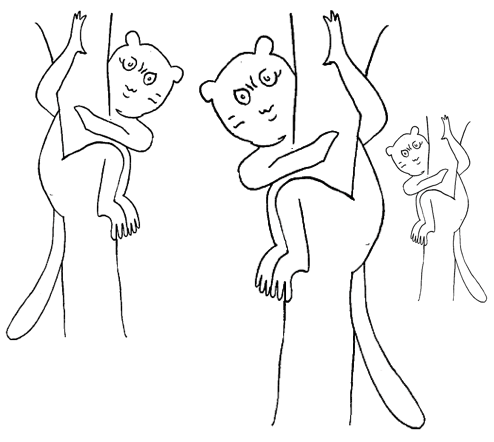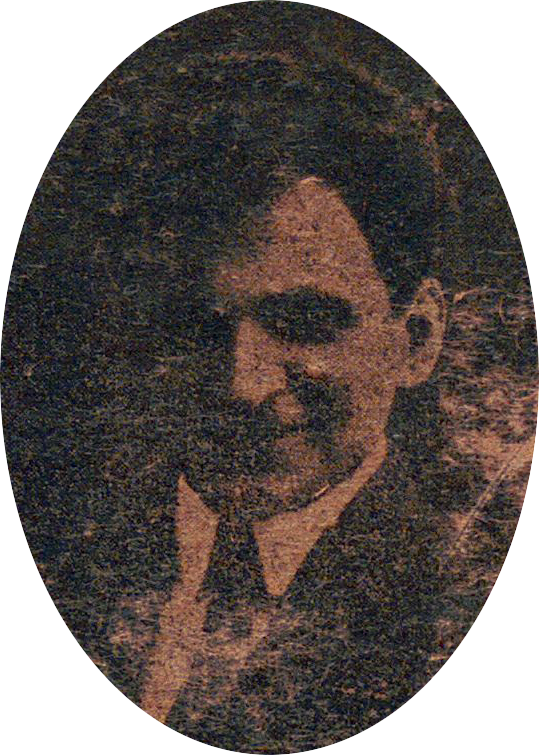Klezmer as Postvernacular music



ポストヴァナキュラーな音楽としてのクレズマー
Klezmer as Postvernacular music



池田光穂
最初のきっかけは、スピノザ『神学政治論(Der Teologish-politisher Traktat)』 が、最初にイディシュ語に翻訳されたのが、1923年Farlag M. Jankowitschにより、ニューヨークの書肆. Volständig übersetzt durch N. Perlman (Perelman). New Yorkだと言われているが、それよりも以前に、Farlag M. Jankovskyの名で書肆名なしに翻訳されている可能性があることを私が2015年ごろに知ったことによる(→「スピノザの人生と作品」)。そんなところで、ジェームズ・クリフォード『リターンズ』 で紹介されていたジェフリー・シャンドラーの著作"Adventures in Yiddishland : postvernacular language & culture"である。ポストヴァナキュラーな言語としてのイディシュ語の (母語でもない完全に他者の言語でもない)第二のライフを論じているからである。ヴァナキュラー文化 (vernacular culture) とは、人々の生活に深く関連した文化や、その文化の根底にねざしている固有の伝統様式をさす。そ のためヴァナキュラーとは、しばしば「土着の」「人々の、ポピュラーな」というニュアンスをとって表現されるものである。したがって、「後の」という時間 性をともなった、ポストバナキュラーは、土着性の後にやってくる、地域や固有性を超えた、時空間的により広がりをもった一般性を獲得するプロセスと、その 帰結のことを意味する(→「ポストヴァナキュラーな言語としてのイディシュ語」)。
"Adventures in Yiddishland" examines the transformation of Yiddish in the six decades since the Holocaust, tracing its shift from the language of daily life for millions of Jews to what the author terms a postvernacular language of diverse and expanding symbolic value. With a thorough command of modern Yiddish culture as well as its centuries - old history, Jeffrey Shandler investigates the remarkable diversity of contemporary encounters with the language. His study traverses the broad spectrum of people who engage with Yiddish - from Hasidim to avant-garde performers, Jews as well as non-Jews, fluent speakers as well as those who know little or no Yiddish - in communities across the Americas, in Europe, Israel, and other outposts of "Yiddishland." - Nielsen BookData.
「『イディッシュランドの冒険』は、ホロコースト以
降の60年間におけるイディッシュ語の変容を検証し、数百万人のユダヤ人にとって日常生活の言語であったイディッシュ語が、著者の言うところの、多様で象
徴的な価値を拡大するポスト・ヴァナキュラー言語へと変遷していく過程をたどる。ジェフリー・シャンドラーは、現代のイディッシュ語文化だけでなく、その
数世紀にわたる歴史にも精通し、現代におけるイディッシュ語との出会いの驚くべき多様性を調査している。彼の研究は、ハシディムから前衛的なパフォーマー
まで、ユダヤ人から非ユダヤ人まで、イディッシュ語を流暢に話す人々からほとんど、あるいはまったく知らない人々まで、アメリカ大陸全域、ヨーロッパ、イ
スラエル、その他の「イディッシュランド」の前哨地におけるコミュニティで、イディッシュに関わる人々の幅広いスペクトルを横断する。」
イディシュ文化が育んだ音楽ジャンルとしてク レズ マーがある。The Klezmaticsは1986年の小楽団で世界的なクレズマー流行をもたらした。また、ジャズ・サックス奏者で作曲家のジョン・ゾーンは、自己のユダヤ 文化のルーツに回帰しつつマサダグループを組織してユダヤ的伝統を取り込んでいる。
"Given the historical associations of the project's name (see Masada), the Hebrew titles of the compositions, the melodic themes and musical structures reminiscent of klezmer music, and the Jewish imagery on the covers of the associated albums, Zorn was clearly exploring his Jewish roots with the Masada songbook and groups. He stated: "The idea with Masada is to produce a sort of radical Jewish music, a new Jewish music which is not the traditional one in a different arrangement, but music for the Jews of today. The idea is to put Ornette Coleman and the Jewish scales together."[https://en.wikipedia.org/wiki/Masada_(band)] .ジョン・ゾーン自身による説明:"The project for Masada was to create something positive in the Jewish tradition something that maybe takes the idea of Jewish music into the 21st century the way jazz developed from the teens and 1920s into the '40s, the '50s, the '60s and on ... My initial idea was to write a hundred tunes. And then I ended up writing over 200 for the first book and then performed it countless time for years.[https://en.wikipedia.org/wiki/John_Zorn]"
「プロジェクト名(マサダ参照)の歴史的な関連性、 楽曲のヘブライ語タイトル、クレズマー音楽を彷彿とさせるメロディ・テーマと音楽構造、関連アルバムのジャケットに描かれたユダヤのイメージを考えると、 ゾーンはマサダの曲集とグループによって、明らかに自身のユダヤ的ルーツを探求していた。彼はこう語っている: 「マサダでのアイデアは、一種の急進的なユダヤ音楽、伝統的なものを別のアレンジにしたものではない新しいユダヤ音楽、現代のユダヤ人のための音楽を作る ことだ。オーネット・コールマンとユダヤ音階を一緒にすることだ。」
「マサダのプロジェクトは、ユダヤの伝統の中で何か
ポジティブなものを創り出すことだった......ジャズが10代、1920年代から40年代、50年代、60年代と発展していったように、ユダヤ音楽の
アイデアを21世紀に持っていくような......。最初は100曲書くつもりだった。そして結局、最初の本のために200曲以上書き、何年もの間、数え
切れないほど演奏した。」[https://en.wikipedia.org/wiki/John_Zorn]
▲ ▲
▲
The Klezmatics (1986-
): NPR
Music Tiny Desk Concert ▲ Klezmer musicians at a wedding, Ukraine, ca.
1925 Photograph by Menakhem Kipnis (Menachem Kipnis,
1878-1942; メナケム・キプニス).(from YIVO ENCYCLOPEDIA)▲ John Zorn - Acoustic
Masada Live
Full Concert
Menachem Kipnis, 1878-1942 はイディシュ・ソングのエスノグラファーでもあった(文献出典はこちら)。
| Menachem Kipnis
(born 1878 in Ushomyr, Volhynia, d. 1942 in the Warsaw Ghetto),[1] was
a singer, critic, and photographer.[2][3][4][5] He was also an
ethnographer of Yiddish songs.[6][7] As a tenor, Kipnis was a common
performer of Yiddish songs.[7][8] He died from a stroke in 1942.[6] Menachem Kipnis' father was an educated cantor. From the age of eight, Menachem Kipnis lived with his older brother, who was also a cantor and is the father of the writer Levin Kipnis. Menachem Kipnis received a traditional Jewish education and sang with his brother in the choir of the Chernobyl synagogue. In this he impressed with his beautiful alto voice.[9] |
メナケム・キプニス(Menachem
Kipnis、1878年ヴォルヒニア県ウショミル生まれ、1942年ワルシャワ・ゲットー没)は歌手、評論家、写真家[1]。
テノール歌手として、イディッシュ・ソングの一般的な演奏者であった[6][7]。 メナケム・キプニスの父親は教育を受けたカントールであった。8歳の頃から、メナケム・キプニスは、同じくカントルであり、作家レヴィン・キプニスの父で ある兄と同居した。伝統的なユダヤ教教育を受けたキプニスは、兄と共にチェルノブイリのシナゴーグの聖歌隊で歌った。その美しいアルトの歌声が印象的だっ た[9]。 |
| ublications 1918: Zekhtsik folks-lider (Sixty Folk Songs)[2] 1925: Akhtsik folks-lider (Eighty Folk Songs)[2] 1930: Khelemer mayses (Chelm Stories) |
|
 "Jewish Music in Poland between the World Wars"
Hakibbutz Hameuchad, Tel Aviv, 1992 (Hebrew) ISBN 965-02-0060-6 "Jewish Music in Poland between the World Wars"
Hakibbutz Hameuchad, Tel Aviv, 1992 (Hebrew) ISBN 965-02-0060-6"Kipnis, Menakhem". YIVO. Retrieved 3 December 2017. "Exhibition of photographs of Menachem Kipnis (1878–1942) - Exhibition co-organized with YIVO in New York". Jewish Historical Institute. Retrieved 3 December 2017. "Menachem Kipnis". WE REMEMBER! SHALOM! זכור! שלום!. Retrieved 3 December 2017. Dynner, G.; Guesnet, F. (2015). Warsaw. The Jewish Metropolis: Essays in Honor of the 75th Birthday of Professor Antony Polonsky. IJS Studies in Judaica. Brill. p. 258. ISBN 978-90-04-29181-2. Retrieved 3 December 2017. Kaplan, C.A.; Katsh, A.I. (1965). Scroll of Agony: The Warsaw Diary of Chaim A. Kaplan. Holocaust Studies. History. Indiana University Press. p. 333. ISBN 978-0-253-21293-1. Retrieved 3 December 2017. Wasserstein, B. (2012). On the Eve: The Jews of Europe Before the Second World War. Simon & Schuster. p. 301. ISBN 978-1-4165-9427-7. Retrieved 3 December 2017. Israel Shalita: “The Jewish Music and Its Creators” – Publisher House Yehoshua Czeczik, Tel-Aviv 1960 p.186 Stampfer, Shaul (2007-09-14). "Defining the Yiddish Nation: The Jewish Folklorists of Poland - By Itzik Nakhmen Gottesman". Religious Studies Review. 33 (2): 164–165. doi:10.1111/j.1748-0922.2007.00181_3.x. ISSN 0319-485X. |
|
| https://en.wikipedia.org/wiki/Menachem_Kipnis |
|
| A cantor or chanter is a person
who leads people in singing or sometimes in prayer. In formal Jewish
worship, a cantor is a person who sings solo verses or passages to
which the choir or congregation responds. |
カントール(cantor)あるいはシャンテールとは、歌や祈りを指導
する人のこと。ユダヤ教の正式な礼拝では、カントールは独唱や聖歌を歌い、(それに引き続き)聖歌隊や会衆がそれに応える。 |
| In Judaism, a cantor sings and
leads congregants in prayer in Jewish religious services; sometimes
called a hazzan. A cantor in Reform and Conservative Judaism, just like
in Orthodox Judaism, goes through years of extensive religious
education, similar to that of a Rabbi, in order to become an officially
recognized cantor. They often come from a long line of cantors in their
family; born with a natural gift of singing with extensive vocal range. The term itself is derived from the Latin for "singer",[1] though it is frequently used to translate a range of equivalent terms in other languages, such as for the leader of singing on a traditional chundan vallam or snake boat of Kerala. A similar term is precentor, defined as a leader of the singing of a choir or congregation. More specific types of cantor include: Hazzan in Judaism, a singer and/or musician. Orthodox Judaism only allows men to be cantors, while the other branches allow women. Reform Judaism and Orthodox Judaism ordain cantors from seminaries. Ordained cantors serve as clergy in their congregations and perform all ministerial rites as rabbis. An ordained muezzin, who calls the adhan in Islam for prayer, that serves as clergy in their congregations and perform all ministerial rites as imams. Cantor in Christianity, an ecclesiastical officer leading liturgical music in several branches of the Christian church Protopsaltis, leader master cantor of the right choir (Orthodox Church) Lampadarios, leader of the left choir (Orthodox Church) Domestikos, leader assistant to the Protopsaltis of the right choir and/or to the Lampdarios of the left choir (Orthodox Church) Precentor Succentor |
ユダヤ教では、カンタオール(カントール)は、ユダヤ教の宗教儀式にお
いて、信徒をリードし、祈りを捧げる。改革派や保守派のカンタオールは、正統派ユダヤ教と同様、正式なカンタオールになるために、ラビと同様の幅広い宗教
教育を何年も受ける。カンタオールとは、ラテン語の "Latin "に由来する。 カンタオールとは、「歌手」を意味するラテン語[1]に由来する言葉であるが、ケーララ州の伝統的なチュンダン・ヴァラム(蛇船)の歌唱指導者など、他の 言語でも同じような意味で使われることが多い。似たような言葉にプレセントールがあり、合唱団や会衆の歌唱指導者として定義されている。 より具体的なカンタオールの種類としては、以下のようなものがある: ・ユダヤ教におけるハッザンは、歌手や音楽家である。正統派ユダヤ教では男性のみがカンタオールになれるが、他の宗派では女性もなれる。改革派ユダヤ教と 正統派ユダヤ教は、神学校からカンタオールを任命する。・聖職に就いたカンタオールは、集会で聖職者として奉仕し、ラビと同様にすべての儀式を執り行う。 ・イスラム教のムエジンは、礼拝のためにアドゥンを呼び、聖職者として信徒に仕え、イマームとしてすべての聖職儀式を行う。 ・キリスト教におけるカントル、キリスト教会のいくつかの支部で典礼音楽を指導する教会役員。 ・プロトプサルティス(Protopsaltis)、右聖歌隊の指導者マスターカントール(正教会 ・Lampadarios, 左聖歌隊のリーダー(正教会) ・ドメスティコス、右の聖歌隊のプロトプサルティスおよび/または左の聖歌隊のランプダリオスの補佐役(正教会) ・プレセンタ ・サクセントール |
リンク
文献
Copyleft, CC, Mitzub'ixi Quq Chi'j, 1996-2099
☆
 ☆
☆